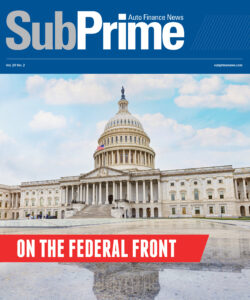2 alleged arson incidents concern ARA about insurance

Two alleged arson incidents in a three-month span in the storage lots at repossession agents in Arizona and Illinois has the American Recovery Association quite concerned for a myriad of reasons.
ARA recapped in a news release that 18 vehicles were destroyed by an alleged firebomb attack in July while they were being stored at an agent lot in Chicago. In May, a similar scene unfolded at Reliable Recovery Services in West Phoenix, Ariz.
ARA said the agent’s security cameras captured evidence in connection with the Arizona incident.
“The recovery industry and our people are in a state of collective shock,” ARA said in the news release. “The dangers of doing the job are already high enough, and the stories of our brothers and sisters being shot, injured and killed in the line of duty are now all too commonplace.
“The economic pinch of the recent years brought about by intermediation, and COVID’s impact on repossession assignments and executive orders locking us out of being able to do work added significant enough strain to eliminate over 25% of our repossession industry. Now we have this,” the association continued.
While human life is obviously priceless, ARA also explained about confronting the numbers when it comes to insurance claims for when repossessed vehicles are damaged in this manner.
Mike Peplinski of Harding-Brooks Insurance Agency offered his explanation when garage keepers coverage comes into play.
“Garage keepers coverage is responsible for the second most frequent claim we see for a recovery professional behind auto accidents and third most costly. It’s simple: paid claims equals higher premiums,” Peplinski said.
Peplinski then calculated some figures based on the arson incident destroying 18 vehicles, which would be covered under the direct primary portion of garage keepers direct primary coverage
“Hypothetically, if a recovery professional’s garage keepers limit was $350,000, (industry standard) and the value of each unit was $10,000 (and all 18 units were totaled due to the fire), the insurance company’s payout would be $180,000 minus the deductible which is normally $500 or $1,000 per vehicle with a cap of $2,500 or $5,000 per claim. $180,000 minus $5,000 equals $175,000 total paid out,” Peplinski continued.
When asked about the longer-term impacts of such a claim on the recovery professional, Peplinski said, “In this example, the recovery professional will now have a $175K claim on their loss runs. This will undoubtedly trigger an increase in their premium at renewal.”
After absorbing Peplinski’s explanations, ARA closed with these thoughts.
“It is unfortunate to see the pain and loss involved in the incident itself, and it is an extra kick in the gut to realize that your premiums will now increase or could result in being dropped entirely if you had prior claims that broke the camel’s back,” the association said.
“As we move deeper into the third quarter of this year, we, as recovery agents, must consider what we collectively can do to bridge the gap in what it cost to store these units that are under our care, custody, and control versus what our profit margins are to store them,” ARA continued. “The answer we should all come up with is there is no profit, as there is no charge to store a vehicle.
“We must reconsider the word ‘free’ and why are we giving a service away for free that cost our office thousands of dollars annually to cover. Why are we giving one day storage away free? If a peril occurs while we have custody of our client’s collateral, we are bound by contract to accept the liability, however daily we are putting our businesses at risk accepting this type of liability with zero compensation,” the association went on to say.
“Unity is key. This is simply starting a conversation to educate our industry,” ARA added.

 View The Latest Edition
View The Latest Edition

